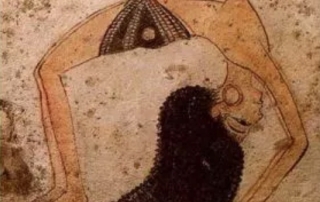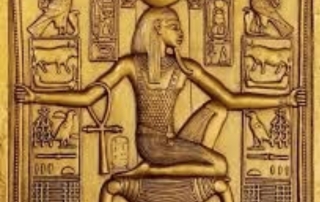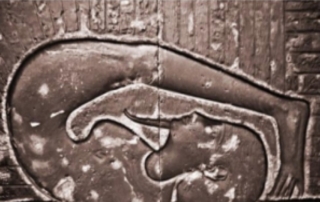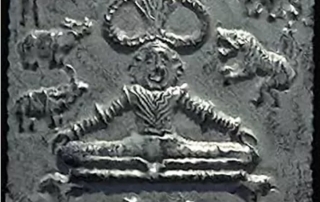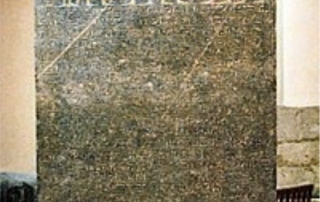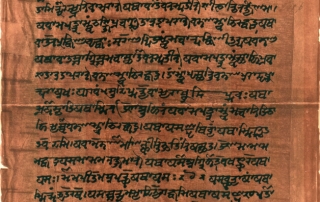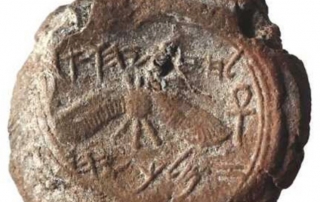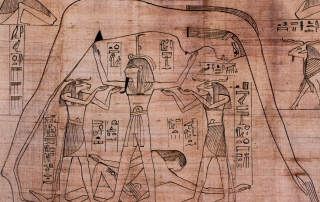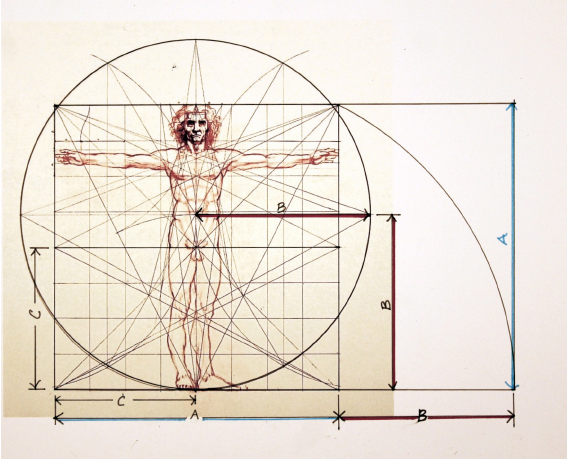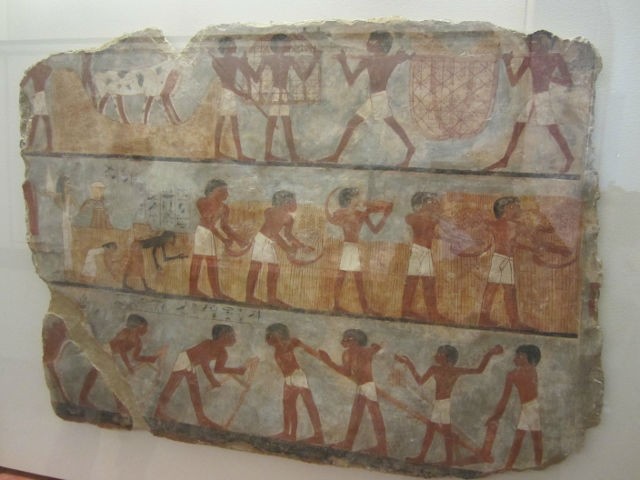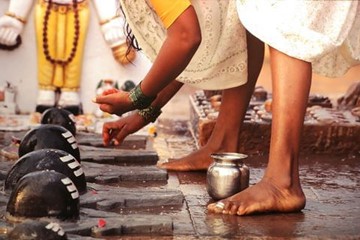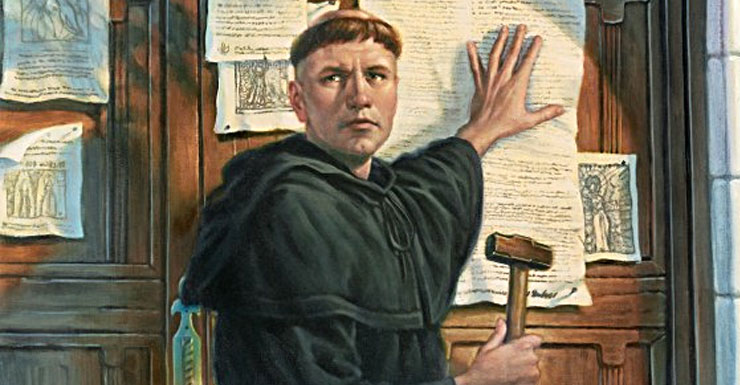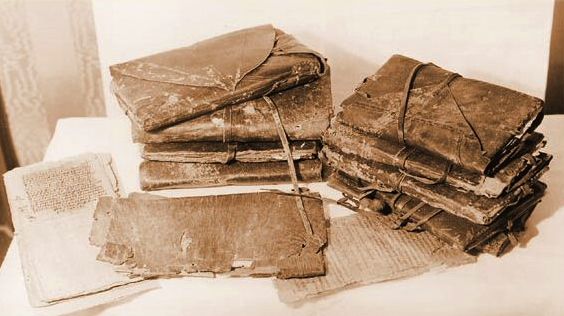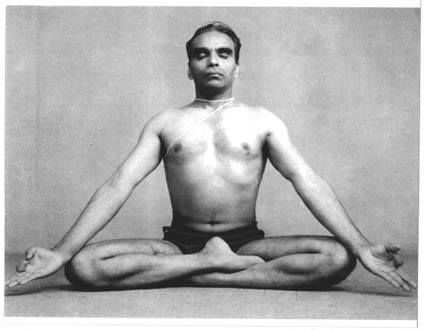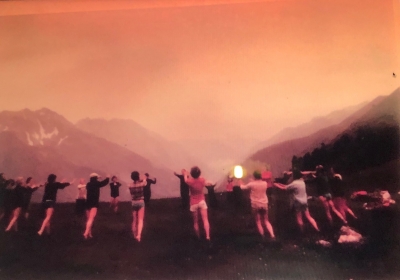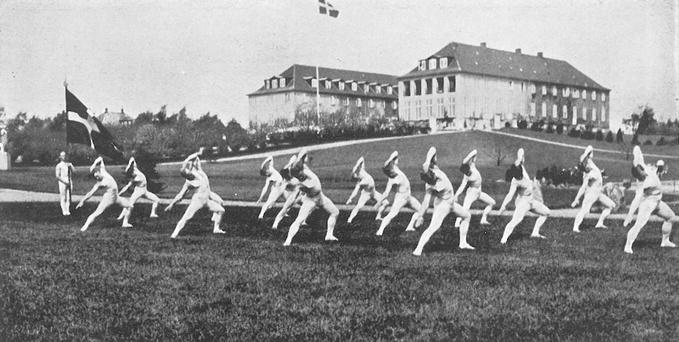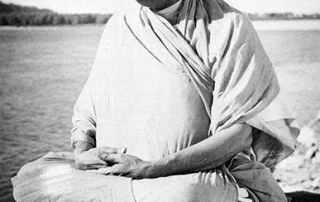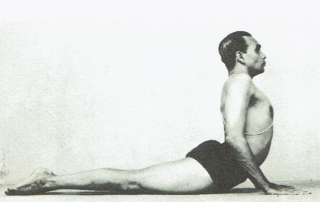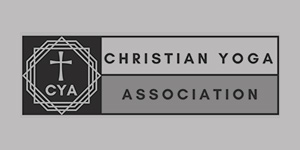YogaFaith’s Intersection of Christianity and Yoga Chronology
16-Page PDF is available for download, see below.
Join one of the timeline’s author Phil Vestal as he explains the intersection of Christianity and yoga chronology
BC/BCE
- 13,800,000,000 BC: God Creates the Universe
- 4,500,000,000 BC: God creates Planet Earth
- 245,000,000 – 65,000,000 BC: Mesozoic Period (the dinosaur age, divided into Triassic, Jurassic, and Cretaceous time periods). In the Triassic age, all continents were believed to be united in one large land mass called the Pangaea.
- 300,000 – 200,000 BC: God creates the first humans
- 8000 BC: Coastal Canaan Paleolithic and Mesolithic evidence of human habitation
- 7000 – 4000 BC: Neolithic Period
- 5500 BC: Egyptian artifacts and evidence of small tribes living in the Nile valley
- 4000 – 3000 BC: Chalcolithic Age
- 4000 – 3400 BC: Predynastic Period. Cultures develop in the western desert of ancient Egypt. Artifacts and hieroglyphics contain various bodily postures. This is the foundation of Kemetic yoga.
- 3000 – 2000 BC: Early Bronze Age
- 3200 BC: Cuneiform (earliest forms of writing)
- 3000 – 2250 BC: Artifacts from the Egyptian temple of Het Heru (Hathor) depict several different postures (see first 3 images above).
- 2700 – 2200 BC: Pyramids built during the Old Kingdom in Egypt
- 2500 BC: The famous Royal Tombs at Ur (discovered in the 1920s). Ur was Abraham’s hometown. It was occupied in the 4th millennium BC. Now known
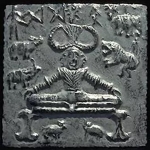
Figure 1: Seal found by John Mackay in the Indus Valley
as Iraq.
- 2350 – 2000 BC: In 1942, A British archaeologist Ernest John Henry Mackay, reported on a seal found while excavating a site near the Indus Valley to be from this time period. See Figure 1. Many different traditions and philosophies surround who is depicted in this seal.
- 2100 BC: Surviving copies of the Sumerian King list found from this year. The list is divided into 2 parts, those who ruled before the great flood and those after.
- 2000 – 1750 BC: Time of Abraham (born in Ur of the Chaldeans; lives 175 years total; dies in Canaan; exact dates of his life are debated)
- Genesis 14:22 the first time we see the use of gesture (mudra) in communing with God as Abraham “lifted [his] hand to the Lord” to swear a solemn oath
- Genesis 17:3 & 17 the first time we see the posture of prostration in scripture as Abraham responds to God appearing to him and making a covenantal promise to him
- Genesis 18:2 the first time we see the posture of kneeling/bowing mentioned in scripture (“bowed down to the earth”) as an act of reverence by Abraham
- Genesis 18:22-23 the first posture of prayer in scripture as Abraham stands and pleads with God
- 1800 – 1100 BC: The Rigveda, one of four Vedas. It is a collection of ancient Vedic hymns and sacred texts. The other three are: Samaveda, Yajurveda, and Atharvaveda.
- 1850 BC: Genesis 24:62 the word translated in English as “meditate” first appears in the Bible
- 1700 BC: Vedic Period (1700 – 500 BC)
- 1730 BC: The Israelites are enslaved in Egypt
- 1730 – 1570 BC: The Hyksos Period
- 1500 – 300 BC: The Old Testament is written
- 1527 BC: Moses is born
- 1489 – 444 BC: The various psalms in the Book of Psalms are written. Psalm 90 is believed to be the first Psalm written, attributed to Moses in 1489 BC.
- 1446 BC: Crossing the Red Sea, Moses leads the Israelites out of Egypt
- 1446 BC: First Passover
- 1445 BC: God gives the Law of Leviticus on Mt. Sinai (also known as Mountain of YHWH and Mt. Horeb)
- 1445 – 1405 BC: Moses compiles and writes The Pentateuch, the first 5 books of the Bible, in the wilderness of Sinai. The book of Genesis is from the 15th century BC ~3,500 years ago.
- 1406 BC: 40 years of wilderness wandering, and Joshua conquers Jericho
- 1405 BC: Israel enters their promised land and Moses dies
-
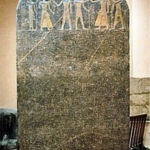
Figure 2: Iseael Stele
1200 – 800 BC: The Samaveda, one of four Vedas is written. It contains ancient Vedic melodies and chants inspired by Hindu scriptures. The other three Vedas include: Rigveda, Yajurveda, and
- 1292 – 1186 BC: Additional Egyptian Artifacts and Hieroglyphics depicting various postures from this time period have been discovered.
- 1237 – 1227 BC: Pharaoh Merneptah discovers the Victory Stele, also know as the Israel Stele. Mentions Israel for the first time in non-biblical history. It was discovered by Flinders
Petrie in 1896 in Waset, the modern city of Luxor, seen in Figure 2.
- 1100 – 800 BC: Yajurveda is one of the four Vedas depicting ritualistic works. It contains ancient Vedic texts of mantras and worship rituals inspired by Hindu scriptures. The other three are: Rigveda, Samaveda, and
- 1058 BC: Psalm 63, a Psalm of David thirsting for God, written when he was in the Desert of Judah
 1055 BC: Psalm 141:2 (May my prayer be set before you like incense; may the lifting up of my hands be like the evening sacrifice) indicates common use of gestures in worship. We also see this much earlier in scripture: Lev. 9:22 for example.
1055 BC: Psalm 141:2 (May my prayer be set before you like incense; may the lifting up of my hands be like the evening sacrifice) indicates common use of gestures in worship. We also see this much earlier in scripture: Lev. 9:22 for example.- 1050 BC: Saul becomes King of Israel
- 1010 BC: David reigns over Israel (2 Samuel 5:4 and 1 Chronicles 29:27 state David reigned 40 years)
- 1000 – 800 BC: The fourth Veda Atharvaveda, a collection of 6,000 mantras and 730 hymns that are divided into 20 books. It is a later addition of Hindu scripture. This Veda represents many rituals and formulas for magic, cures, and curses. The other three Vedas are: Rigveda, Samaveda and Pictured top right is a page from the Atharvaveda.
- 900 – 600 BC: Ancient seal belonging to King Hezekiah (unearthed near the Temple Mount in Jerusalem from the Royal Court of Israel and Judah).
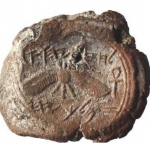 Figure depicts a two-winged sun with two ankh symbols on either side. Pictured at middle right.
Figure depicts a two-winged sun with two ankh symbols on either side. Pictured at middle right. - 900 – 1300 BC: Clay Tablets of the Canaanite period depict gods and goddesses, found between 1929 – 1939 near ancient Ugarit, which is Syria today. These date back to Numbers, 1 Kings, Jeremiah, and Hosea when God repeatedly refers to gods and goddesses, like Baal and Ashtaroth. Prophets strongly warned God’s people to not worship false gods or idols.
- 950 BC: Geb/Qeb (god Earth) with reclining Nut (goddess Sky) appear in various postures with Shu/Su (god of light and air) standing, representing air with ram-headed god on either side. Pictured lower right.
- 970 BC: David dies, Solomon becomes King
- 930 BC: Solomon dies and the kingdom divides into northern and southern kingdoms
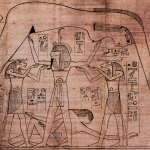
- 873 – 848 BC: King Jehoshaphat, the 4th King of Judah reigned 25 years.
- 800 BC: House of Yahweh Ostracon receipt for a donation appearing on a piece of 4” pottery. It is the oldest mention of Solomon’s Temple outside of the Bible.
- 800 BC: The Upanishads are a collection of texts of religious and philosophical nature, written in India between c. 800 BC and up to 1400 BCE, during a time when Indian society started to question the traditional Vedic religious order. The two earliest Upanishads written are Brihadaranyaka and Chandogya. The earliest of Upanishads are known as the Principal Upanishads.
- 650 – 587 BC: Fragments with similarities to various OT passages known as the Silver Amulet Scrolls (discovered in 1979 near a burial site outside of Jerusalem), known to be during Jehoiakim’s reign (2 Chronicles 36). These are believed to be the oldest surviving texts from the Hebrew Bible, dating from the First Temple period (c.1000 – 586 BCE) and found by archaeologist Ketef Hinnom.
- 600 – 401 BC: Upanishads Taittiriya, Aitareya, and Kausitaki were written sometime during the 6th to 5th century. Kena, Katha, Isa, Svetasvatara, and Mundaka Upanishads are thought to have been written in 300 – 100 BC.
- 586 BC: Destruction of Jerusalem temple and exile of Israelites to Babylon
- 563 BC: The Birth of Siddhartha Gautama, or Gautama Buddha, the founder of the world religion Buddhism who lived in India. Revered as a philosopher, meditator, spiritual teacher, and religious leader (Some estimate 550 – 480 BC).
- 538 BC: Israelites return to Israel from exile in Babylon
- 525 – 405 BC: Egypt ruled by Persians
- 516 BC: Temple rebuilt in Jerusalem (2nd Temple)
- 509 BC: Roman Republic is established
- 500 BC: Pre-Classical yoga era (500 – 200 BCE)
- 500 BC: The Brahma Sutras systematize and summarize the philosophical and spiritual ideas found in the Upanishads (Hindu teachings 500 – 700 BC).
- 500 – 400 BC: The Yoga Sutras of Patanjali are compiled, includes the 8 Limb path
- 500 BC – 1500 AD: The Middle Ages
- 400 BC: Bhagavad Gita, consists of 700 Hindu verses and Ramayana, both are a part of the epic tale of ancient India. It is part of the Prasthanatrayi, which also includes the Upanishads (spiritual teaching of Hinduism) and Brahma sutras, which systematizes the Upanishads. These are the three starting points for the Vedanta school of Hindu philosophy.
- 300 BC: Rishi Jaimini writes the Purva Mimamsa Sutras, which is one of the most important ancient Hindu philosophical texts
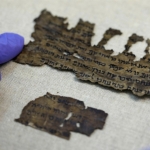 300 – 70 BC: The Dead Sea Scrolls written (found in caves near Jericho in 1947). The Oldest Biblical Manuscripts document the Old Testament and confirm its accuracy in detail. Some believe that the dates for Dead Sea Scroll Biblical manuscripts could date as far back as 400 BC. Pictured right.
300 – 70 BC: The Dead Sea Scrolls written (found in caves near Jericho in 1947). The Oldest Biblical Manuscripts document the Old Testament and confirm its accuracy in detail. Some believe that the dates for Dead Sea Scroll Biblical manuscripts could date as far back as 400 BC. Pictured right.- 200 BC: Oldest Fragments of LXX Septuagint (Greek Translation of OT). Fragments and complete manuscripts range from 200 BC – 400 CE).
- 200 BC: Classical era of yoga (200 BC – 500 CE)
- 120 BC: The Shiva Sutras are a collection of 77 aphorisms that include spiritual mysticism known as Trika.
- 6 – 4 BC: Jesus is born (exact year is unknown)
- 4 BC: Herod the Great dies.
AD / CE
- 45 – 100 AD: The New Testament is written
- 64 – 68 AD: Rome burns, and Nero blames and persecutes Christians
- 60 AD: Julius Caesar, Crassus and Popey form the first Triumvirate
- 79 AD: Mt. Vesuvius erupts, destroying Pompeii and Herculaneum
- 70 AD: 2nd Temple in Jerusalem is destroyed by Rome
- 251 AD: Anthony of Egypt is born. He would help begin the monastic move to the desert and be known as one of the “desert fathers.”
- 312 AD: Constantine “converts” to Christianity and the empire begins to transform to Christianity.
- 325 AD: Council of Nicea: Nicene Creed written. Called by newly converted emperor Constantine, the first ecumenical council of the Christian church, meeting in ancient Nicaea (now Iznik, Turkey).
- 333 AD: The Nag Hammadi Library, the most extensive documentation of early Christianity (discovered near Cairo, Egypt, and the pharaonic tombs of the 6th dynasty). See also 1945.
- 480 AD: Benedict of Nursia born, who would later write The Rule of St. Benedict
- 585 AD: An excavation in 1970 by Israeli Archaeologist Vasilios Tzaferis uncovers the Byzantine Church (dated to 585AD) where Christ cast out demons in the first century.
- 600 AD: Tantra emerges, spreads through Asia (worships female deities and supernatural powers)
- 800 – 1000 AD: Bhagavata Purana/Srimad Bhagavatam, is made up of some 18,000 stanzas divided into 12 books and popularized the worship of Vishnu. Revered as a Purana (ancient text), it’s an epic Vaishnava poem consisting of 18,000 shlokas (verses) over 12 skandhas (or cantos/songs)
- Bhagavad Gita vs Bhagavata Purana/Srimad Bhagavatam: The speaker of the Bhagavad Gita is the Supreme Personality of Krishna, whereas the speaker of Bhagavata Purana, Shukadeva Goswami is his devotee [also see 400 BC, Bhagavad Gita].
- 950 AD: Sculptures in India echo Tantric [sexual and erotic] themes
- 1000 AD: Ancient text Masoretic Manuscript, defines the Jewish canon and is the authoritative Hebrew and Aramaic text. It consists of 24 books of Tanakh in Rabbinic Judaism.
- 1017 AD: Al-Biruni, an Iranian scholar, known as the “Father of Comparative Religion,” travels to the Indian subcontinent and authors a study of Indian culture Tārīkh al-Hind (History of India), after exploring the Hindu faith practiced in India. He lived with Hindus for 16 years and translated Patanjali’s Yoga Sutras.
- 1054 AD: The Great Schism occurs, i.e., East/West split in the church between Roman Catholic and Eastern Orthodox
- 1200 AD: Gorakhnath merges Tantra and the physical discipline of Hatha Yoga and “attempts to speed up enlightenment”
- 1288 AD: Marco Polo visits India and journals of Jain monks, “They would not kill an animal on any account, not even a fly, or a flea, or anything that has life; for they say these have all souls, and it would be sin to do so.”
- 1400 AD: Swatmarama authors Hatha Yoga Pradipika, includes 15 postures and physiological arousal methods
- 1517 AD: Reformation begins with Martin Luther’s 95 Theses
- 1577 AD: Spanish Carmelite nun and famed mystic Teresa of Avila writes a guide for spiritual development through service and prayer called The Interior Castle (The 7 Mansions), depicting the journey of faith through 7 stages, ending with the union of God. The seven mansions (also called dwelling places) are each a step closer to God.
- 1588 AD: The Interior Castle is published (1675 in English)
- 1588 AD: Tantric text involves a man seducing a woman against her will
- 1659 – 1669 AD: European Francois Bernier’s letters from India written between this time frame, notes: “Yogi’s spend all their time in contemplation and prayer, really uniting to God.”

- 1650 AD: Yoni Tantra emerges. Yoni Tantra is a dialog between Shiva and Parvati. It reveals yoni puja as a highly revered sadhana (spiritual practice) practiced by kaulas (tantrics). Yoni Puja (pictured at right) is part of the tantric rituals and is a ceremony or worship.
- 1700 AD: Modern Period of yoga (1700 – 1900)
- 1700 AD: The era of Modern Yoga begins with the Gheranda Samhita’s Hatha text depicting 32 asanas and many physiological arousal techniques
- 1737 AD: Ramanandi Jayatarama authors the Joga Pradīpikā (“A Small Light on Yoga“), a hatha yoga text combining Hindi, Braj Bhasa and Khari Boli. Included in the text are 6 cleansing methods, 84 asanas (postures), 24 mudras (hand/body postures) and 8 kumbhakas (pranayama or breath techniques).
- 1772 AD: Calcutta becomes the capital of India
- 1773 AD: British rule in India begins
- 1768 AD: Boston declares a day of fasting and prayer as a protest against a British plan to station troops in the city in September
- 1775 AD: American Revolution begins Apr 19, 1775
- 1775 AD: Continental Congress issues a proclamation recommending, “A day of public humiliation, fasting, and prayer” be observed by the “English Colonies” on Thursday, July 20, 1775
- 1811 – 1871 AD: Francois Delsarte, a French acting and singing teacher teaches exercises combining breath and movement for theater, but also gains broader popularity. His teaching influenced later teachers such as Genevieve Stebbins.
- 1813 AD: Pehr Henrik Ling founded the Royal Central Gymnastics Institute. His system of development was highly influential on later physical culture movements and ultimately modern yoga.
- 1830 AD: Ramanandi Jayatarma’s 84 postures are illustrated in a manuscript as paintings (100 years after his original Joga Pradipika was authored)
- 1837 AD: Live burial of a “wandering yogi” that lasts 40 days. The maharajah of the Punjab becomes a legendary wonder.
- 1849 AD: The first Westerner, Henry David Thoreau, considers himself a “yogi”
- 1851 AD: A Treatise on the Yoga Philosophy by 9th-century Bengali physician and scientist, N.C. Paul is considered the first scientific study of yoga with a focus on yoga breathing and what most believe the introduction of yoga to the Western world.
- 1859 AD: Charles Darwin authors On the Origin of Species, considered to be the foundation of evolutionary biology.
- 1861 AD: Guru and disciple of Mahavatar Babaji, Lahiri Mahasaya (original name is Shyama Charan Lahiri, 9/30/1828 – 9/26/1895) revives Kriya Yoga. He was also known as Kashi Baba and Yogiraj and was the guru of Indian Monk Swami Sri Yukteswar Giri (5/10/1855 – 3/9/1936).
- 1863 AD: Abraham Lincoln issues a Proclamation Appointing a National Fast Day, signed March 30,1863, one month before the fast day was observed.
- 1881 (July 15): A.K. Mozumdar: Born this day into a Hindu family, he departed his homeland of Calcutta at the age of 16 in search for enlightenment and Christianity. He converted to Christianity and was ostracized in his new home of America (Seattle region). He published the first known Christian Yoga magazine from Spokane, WA as well as his message The Triumphant Spirit: Lesson book of the ages, the Christ message of today; convincing, dynamic, practical and spiritual published in January of 1978. He died March 9, 1953.
- 1885-1890 AD: Theosophical Society sponsors works of M.N. Dvivei / Manilal Dwivedi, author and philosopher, and Ram Prasad, a Sanskrit scholar who authored The Science of Breath & the Philosophy of the Tatwas. His translation of an ancient Sanskrit text gives an incredibly detailed view of the nature of breathing and the tattvas (elements of reality, in classical Samkhya Hinduism). Manilal Dwivedi is best known for a collection of poems called Atmanimajjan, based on the theme of love in the context of advaita (non-duality) philosophy. He also wrote plays: Kanta, combined Sanskrit and English dramatic techniques: Pranavinimaya, a study of yoga and mysticism; and Siddhantasara, a historical critique of the world’s religious philosophies.
- 1890 AD: Vivekananda [1862 – 1902], part of a new theory and anglophone yoga revival in India
- 1892 AD: Genevieve Stebbins publishes Dynamic Breathing and Harmonic Gymnastics. A Complete System of Psychical, Aesthetic and Physical Culture. Based in Delsartism, she combined movement, breathing, and relaxation into a religious framework.
- 1896 AD: Vivekananda’s Raja Yoga, some consider this the era of Modern Yoga beginning, see also 1700 AD.
- 1896 AD: The study of two yogis at the Millennial Exposition in Budapest appear to go into death-like trances
- 1906: Jean-Marie Déchanet was born: A French monk of Sint-Andries Abdij (Abbaye de Saint-André) near Bruges, Belgium. In 1956, he wrote the book Christian Yoga (1906-1992).
- 1906: Danish Gymnastics becomes a component of training British soldiers.
- 1907: Rajratna Manikrao trains Swami Kuvalayananda in the Indian System of Physical Education
- 1908: Richard Schmidt’s authors studies of the history of hatha yoga and “fakirism”
- 1911: Kodi Ramamurthy Naidu (Professor Ramamurthy) performs yoga strength training in London, showcasing his strength through performances breaking chains and allowing elephants to walk on him. Asana and pranayama were central to his training.
- 1913: Maxick (Max Sick) publishes Muscle Control. A German strongman and gymnast, his work would influence later Indian bodybuilders and yogis such as B.C. Ghosh.
- 1918: Indian guru Manibhai Haribhai Desai (1897 – 1989), known as Shri Yogendra, founds The Yoga Institute. Yogendra is an important figure in the modern revival of Hatha Yoga, both in India and United States, many call him “the father of modern yoga ”
- 1918: Carl Jung treats a female client with kundalini techniques of moving energy and sparks a debate on whether yoga is enlightenment or madness
- 1920: Swami Kuvalayananda (born Jagannatha Ganesa Gune, 8/301883 – 4/18/1966) explores the effects of uddiyana bandha and nauli on the human body with the help of some of his students. He concludes that through the ancient system of yoga, if understood through the modern scientific experimental system, could help society. The science of yoga would become his life’s work.
- 1920: HC Buck founded the YMCA College of Physical Education in India. Some have called him the “Father of Physical Education in India.” He brought yoga into the physical program at the YMCA in India.
- 1920: Yogananda comes to America from India teaching yogic muscle control. He taught a mixture of bodybuilding and yoga.
- 1922: Mohandas Karamchand Gandhi is arrested for sedition during his campaign
- 1923: B.C. Ghosh opens the College of Physical Education in Calcutta. They taught bodybuilding and asana. Bikram Choudhury, founder of Bikram yoga, studied here.
- 1924: Swami Kuvalayananda authors the first scientific journal specifically devoted to studying yoga called Yoga Mimamsa.
- 1924: Kuvalayanananda founds the Kaivalyadhama Health and Yoga Research Center at Lonavla where he would do the majority of his research, making a profound impact in the yoga world
- 1924: Jagannath G. Gune founds an ashram south of Bombay and embarks on a major experimental study of yoga
- 1925: Niels Bukh publishes Primary Gymnastics. His Danish system of movement, breathing, and stretching would heavily influence exercise programs in India in the 1920s and 1930s. Many of the movements in his system are similar to those in Ashtanga and Iyengar’s Light on Yoga.
- 1926: Gune reports Headstand and Shoulder Stand promote blood circulation
- 1927: Gune helps Gandhi in treating high blood pressure
- 1929: Edmund Jacobson, a Chicago physician, authors Progressive Relaxation using yogic techniques to combat anything from headaches to depression
- 1930: Swami Kuvalayananda trains large groups of yoga teachers as a way to spread physical education in India
- 1930: “Eve’s Ideal Path to Grace” article by Clayton published in Health and Science. Pictures women in stretches that would be called yoga today but are noted at the time as gymnastics and not seen as yoga.
- 1931: Gune publishes Asanas, purely focusing on health and wellbeing with no mention of supernatural feats of Tantric rites
- 1931: Mollie Bagot Stack publishes Building the Body Beautiful, The Bagot Stack Stretch-and-Swing System combining gymnastics and health in order to become physically attractive and bring harmony between one’s life and nature. She had learned asana and relaxation techniques in India in 1912.
- 1932: Kuvalayananda opens the Mumbai branch of Kaivalyadhama
- 1932: Kovoor T. Behanan, a Yale psychologist arrives at Gune’s ashram to study yoga
- 1932: Scientists split the atom
- 1933: Shri Yogendra, established the journal Yoga in 1933. He authors and innovates modern methods to teach yoga. His guru was Paramahamsa Madhavdasji (1798 – 1921) .
- 1933: The maharajah of Mysore in India hires Tirumalia Krishnamacharya (1888 – 1989) to run the palace yoga studio, and his students become yoga’s most influential gurus.
- 1934: The Mysore Palace sends Krishnamacharya to study Gune’s methods
- 1936: Kuvalayananda opens the Ishwardas Chunilal Yogic Health Center where prevention and cure of various diseases are strictly done through yoga. During this same period, he also opened Kaivalyadhama Spiritual Center.
- 1937: Behanan of Yale reports yoga experiments in breathing that produce a “retardation of mental functions”
- 1937: Koover T. Behanan authors Yoga: A Scientific Evaluation
- 1930: Fr. Jean-Marie Déchanet, a French Monk holds teacher trainings in Montreal Canada where almost 200 students attend (see also 1906)
- 1938: Jung calls Kundalini a “deliberately induced psychotic state” that results in “real psychosis”
- 1943: Kuvalayananda opens a spiritual practices branch of Kaivalyadhama in Rajkot, Saurashtra
- 1945: Now known as the Nag Hammadi Library, the most extensive documentation of early Christianity is discovered near Cairo, Egypt, and the pharaonic tombs of the 6th dynasty. The texts date back to 333 AD.
- 1946: Paramahansa Yogananda (1/58/1893 – 3/7/1952) authors The Autobiography of a Yogi, a book about mystical and supernatural powers
- 1946: Founder of Bikram Yoga, Bikram Choudhury is born
- 1947: India becomes an independent state
- 1952: Harry S. Truman, proclaims a National Day of Prayer – Proclamation 2978 on July 4, 1952
- 1953: Indra Devi authors Forever Young, Forever Healthy, the first yoga book that focuses on ultimate health through yogic techniques
- 1956: Fr. Jean-Marie Déchanet publishes Christian Yoga in French.
- 1957: Basu Kumar Bagchi, a confidant of Yogananda and scientist at University of Michigan, reports that yogis can achieve an extreme slowing of aging
- 1957: Sivaya Subramuniyaswami or Rev. Father Subramuniya (Born Robert Hansen; January 5, 1927 – November 12, 2001) opened Christian Yoga Church centers in San Francisco in 1957, with almost 1600 classes in one calendar year. Christian yoga study groups were created, and Sunday worship services included the singing of Christian hymns, readings from the Bible and the Bhagavad Gita or Upanishads and a sermon related to Christian or Hindu mysticism
- Fr. Subramuniya opened both Hindu and Christian centers, mixing the two theologies. His message and teachings, at the time, reached India, Ceylon, Germany, England, South American, and West Africa.
- He states, “Christian Yoga answers the questions ‘Who am I? Where did I come from? Where am I going?” His members explore their inner being to find these answers through concentration and deep meditation.
- 1960: Fr. Jean-Marie Déchanet book Christian Yoga is published in English
- 1961: Fr. Jean-Marie Déchanet letters indicate he was living in a monastic foundation in what is now the Democratic Republic of Congo
- 1960: Neem Karoli Baba (Maharaji), a modern-day yogi of Northern India, has the siddhi of Annapurna and was said to multiply food and turn water into milk for his devotees as Christ did for the multitudes.
- Siddhis are paranormal, supernatural, or otherwise magical powers, abilities, and attainments that are the products of yogic advancement through sādhanās such as meditation and yoga
- 1961: Bagchi contradicts earlier findings of yoga as stopping the heart – reports it slows the heart, not stops it
- 1961: Kuvalayananda opens the Srimati Amolak Devi Tirathram Gupta Yogic Hospital for the treatment of chronic functional disorders through yogic techniques.
- 1962: Scientists at Gune’s ashram find that yogis can withstand live burial in an airtight pit for hours (not weeks, as previously suggested)
- 1965: B.K.S. Iyengar authors Light on Yoga which became a global best seller. It aligns with scientific research and medicine.
- 1966: Beth Shaw, founder of the longest running yoga school, YogaFit, in North America is born.
- 1970: Swami Rama conducts a blood flowing demonstration in a laboratory, showing the effects of moving flow from one side to another, and its warming and cooling effects.
- 1972: W. Ritchie Russell, a British scientist and physician warns that pronounced bending of the neck in yoga may result in strokes and other crippling disabilities.
- 1973: Scientists report numerous strokes caused by yoga.
- 1974: Scientists at Benares Hindu University find that yoga increases testosterone (the first clinical laboratory that yoga increases sexuality)
- 1975: Herbert Benson, a Harvard physician, reports that meditation lowers respiratory and heart rates, blood pressure and oxygen consumption. He calls this relaxed state hypometabolism.
- 1975: Michelle A. Thielen, born Michelle A. Hardy, Founder of YogaFaith and Christian Yoga Association, is born.
- 1976: Lee Sannella, a San Francisco psychiatrist, authors a book on Kundalini arousal and concludes spiritual enhancement as opposed to psychosis
- 1976: Sannella opens the Kundalini Crisis Clinic
- 1978: Stanford University Scientists report people in Tantric meditation undergo a variety of physiologic arousals (a reversal of the typical yoga promotion that it calms and relaxes)
- 1982: Anandamayi Ma, an Indian saint ‘left her body’ during meditation. Ma was also known to perform miracles (siddhi) with one word or one touch.
- 1983: Swedish scientists discover that advanced, rapid breathing techniques used by yogi’s can be practiced without passing out or light-headedness
- 1984: Doris Srinivasan, a Professor of Indological studies, says that “When we make claims that yoga is 5,000 years old based on one seal (Pashupati Seal) we are being anachronistic. Such a finding is not a sound base for constructing a history of yoga or a belief in a ‘classical tradition’.” Numerous Scholars such as Mark Singleton and Geoffrey Samuel echo this philosophy.
- 1985: Czech scientists report that Tantric poses generate the same brain waves as love and desire
- 1989: International Association of Yoga Therapist, IAYT, founded by Larry Payne, PhD, and Richard Miller, PhD.
- 1992: Fr. Jean-Marie Déchanet dies
- 1995: Swami Sivananda, authors The Complete Illustrated Book of Yoga which popularized the Sivananda style. Swami is considered a guru to the gurus.
- 1995: Fr Tom Ryan publishes Prayer of Heart and Body: Meditation and Yoga as Christian Spiritual Practice
- 1994: Dr. Muata Ashby proposes the theory of yoga originating in Egypt and migrating to India based on ancient Egyptian hieroglyphs depicting various gods and goddesses in various postures. He authors Egyptian Yoga, Postures of Gods and Goddesses (2020). See Figure 13.
- 1994: YogaFit is founded by Beth Shaw, based out of North America.
- 1996: Justin O’Brien publishes A Meeting of Mystic Paths, Christianity, and Yoga
- 1998: The National Institute of Health begins spending public funds researching yoga to address conditions such as arthritis, diabetes, chronic pain, insomnia, and depression
- 2001: Father Tom Ryan begins retreats for Christian teachers of yoga.
- 2001: Italian scientists report that repeating a mantra reduces respiration by 50%, calming the mind.
- 2001: A team at University California at Davis reports that yoga boosts aerobic conditioning and meets current recommended standards for improving physical fitness and health.
- 2002: The Consumer Product Safety Commission discovers a significant rise in yoga related injuries
- 2003: Yogani makes his internet debut drawing thousands to his kundalini tantric style for arousal. He deems the word ‘kundalini’ as code for sex.
- 2004: Russian Scientist discovers Cobra Pose increases blood levels of testosterone
- 2004: A medical report surfaces of a woman’s lungs rupturing due to fast yogic breathing
- 2005: Christians Practicing Yoga is founded by Father Tom Ryan and teachers, an organization that provides support, education, and community for an interdenominational Christian audience. CPY would later become a non-profit in 2018.
- 2005: Analysts at the University of Virginia review 70 studies and conclude that yoga promotes cardiovascular health
- 2005: One of the first Christian yoga schools, Yahweh Yoga, was founded by mother-daughter team DeAnna Smothers and Courtney Chalfant.
- 2006: Indian scientists report that yoga cuts the basal metabolic rate by 13%
- 2006: Susan Bordenkircher publishes Yoga for Christians: A Christ-Centered Approach to Physical and Spiritual Health through Yoga
- 2007: Scientists at Columbia and Long Island universities report that vigorous yoga fails to meet the minimum standard of aerobic recommendations as earlier reported
- 2007: Teams at Harvard and Boston Universities find that yoga practitioners brains contain an increase in neurotransmitters that act as antidepressants
- 2007: Timothy McCall, a doctor and medical editor of Yoga Journal, authors Yoga as Medicine, recommending generally yoga class avoid headstands due to risk of serious injuries
- 2008: A team based at the University of California at San Francisco finds that yoga increases production of telomerase, the enzyme that is linked to cellular longevity
- 2009: The Council of Ulemas, an Islamic body in Indonesia, bans yoga because it contains Hindu elements
- 2009: The discovery of telomerase and its’ role in the human body wins a Nobel Prize
- 2009: A team at the University of Pennsylvania report that yoga reduces hypertension and its precursors (factors linked to stroke and cardiovascular disease)
- 2009: Scientists in Philadelphia report that yoga activates the right (creative) brain
- 2010: Analysts at the University of Maryland examine more than 80 studies and find that yoga equals or surpasses other physical activities in reducing stress, improving balance, decreasing, or diminishing fatigue and anxiety while improving sleep and overall wellbeing
- 2011: Taiwan physicians report that yoga lessens the incidence of spinal deterioration
- 2011: Indian scientist report that yoga eases symptoms of rheumatoid arthritis
- 2011: The Freedom from Religion Foundation unsuccessfully attempted to challenge the constitutionality of the National Day of Prayer. It was unanimously dismissed by the federal appellate court.
- 2012: William J. Broad publishes The Science of Yoga, a book that shatters myths, reveals dangers, and offers impartial evaluations of the practice of yoga.
- 2013: Michelle A. Thielen founded YogaFaith, an international Christian Yoga School.
- 2016: Susan Neal publishes Scripture Yoga: 21 Bible Lessons for Christian Yoga Classes
- 2016: Michelle A. Thielen publishes Stretching Your Faith, Practicing Postures of Prayer to Create Peace, Balance and Freedom, a book that combines postures as a way to pray, worship and connect to Christ.
- 2017: Christian Yoga Association is founded with 5 founding charter members.
- 2021: September of 2021 Tina Russo Lancey founded Christian Yoga Magazine, an online and in-print subscription-based resource for Christian yoga practitioners.
- 2022: July of 2022 YogaFaith passes the vigorous standards of International Association of Yoga Therapist (IAYT) becoming the first Christian Yoga School in the world accredited through the IAYT.
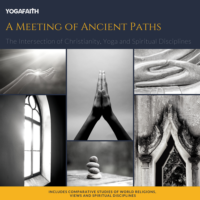 Learn more in our continued education or stand alone specialty certification:
Learn more in our continued education or stand alone specialty certification:
- A Meeting of Ancient Pathways: The Intersection of Christianity, Yoga and Spiritual Disciplines, a prerequisite for YF Yoga Therapy Program. A stand alone specialty certification and 50 hours of Continued Education Credits [5.0 CEU’s]
- This timeline is a supplement to the course

